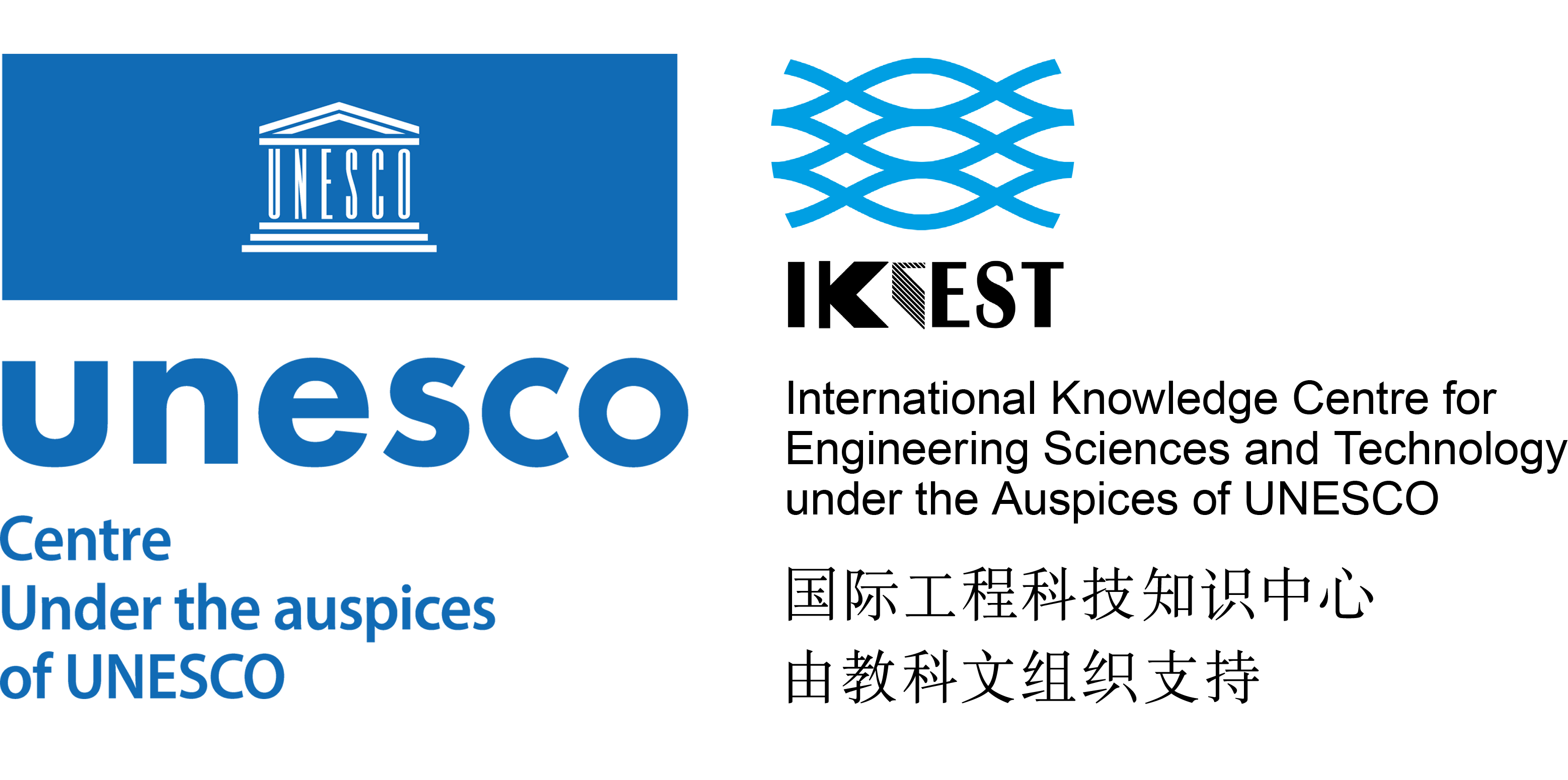Journal
Please choose volume & issue:
-
Torsional vibration induced by gyroscopic effect in the modified couple stress based micro-rotors
Keywords:Torsional vibration;Gyroscopic effect;Flexural-torsional coupling;Small-scale effects;Modified couple stress theory;Micro-rotorsAbstracts:In this research, the small-scale effects in the torsional vibration of the micro-rotors with eccentric micro-disks are investigated based on the modified couple stress theory. The torsional deformation of the micro-shaft described by function φ(x,t) is considered to be independent of the flexural deformation described by functions v(x,t) and w(x,t). Using Hamilton's principle, the system of coupled nonlinear governing partial differential equations of motion and the associated boundary conditions are derived. The system of equations includes one corresponding to the torsional deformation and two others corresponding to the flexural deformation. By employing the Galerkin method, the system of governing equations is transformed into three coupled ordinary differential equations. The flexural-torsional nonlinear coupling due to the gyroscopic effect can excite the torsional mode. So, by utilizing the multiple scales method the non-resonant excitation and the torsional super-harmonic resonance are analytically investigated and in the special cases, the analytical results are compared with the numerical ones. Some parametric studies are presented to investigate the effects of various parameters, including the material length scale parameter, on the torsional natural frequency and the torsional super-harmonic resonance amplitude of the micro-rotors.
-
Smooth interface crack between two bonded dissimilar orthotropic elastic media under shear loading
Keywords:Interface crack;Orthotropic material;Singularity;Shear loadingAbstracts:An interface crack in an orthotropic bi-material is studied under applied loading. Crack faces are assumed to contact smoothly and only slide relatively due to exertion of applied loading. A singular elastic field disturbed by the interface crack is concerned, and the Fourier transform technique is used to solve the singular elastic field. Dual integral equations involving trigonometric functions are derived and solved analytically. An analytic solution is given and explicit expressions for the full elastic fields at any position are obtained for constant and linear shear loading at the crack faces. Stress intensity factors and energy release rate are given explicitly. The obtained results show that no oscillation behavior occurs for smooth interface cracks, but only the usual square-root singularity near the crack tip. The influence of material properties on the crack initiation angle is presented graphically.
-
Three-dimensional thermal Green's functions of quasi-steady-state motion in anisotropic bimaterials and some related problems
Keywords:Thermal Green's functions;Quasi-steady-state and steady-state;Moving source;Anisotropic bimaterials;Fourier transformAbstracts:Three-dimensional thermal Green's functions of quasi-steady-state motion, as well as that of steady-state conduction in anisotropic bimaterials are derived based on two-dimensional Fourier transform, and are separated as a sum of a full-space Green's function and a complementary part. It is worth mentioning that Green's functions of steady-state case can be obtained directly by replacing the moving source by the static one and be expressed in a more concise form. Although the present paper aims to develop Green's functions in anisotropic bimaterials, the derived solutions can be reduced to simple cases, such as in isotropic or orthotropic materials, in half-space or full-space, and on the interface or surface. Numerical examples are presented to verify the validity of present solutions. Moreover, the comparison between steady-state case and quasi-steady-state cases of two different velocities, indicates high correlation with the properties of material and the distortion of thermal fields induced by inertial effect.
-
Identification of the Lamé parameters of an inhomogeneous pipe based on the displacement field data
Keywords:Cylinder;Oscillations;Lamé parameters;Variable elastic properties;Acoustic method;Inverse problemAbstracts:The present paper considers the direct and inverse problems on steady-state oscillations of functionally graded elastic pipe. The direct problem is reduced to solving a numerical set of canonical systems of first-order differential equations with variable coefficients. The influence of the variable Lamé parameters on the displacement functions and amplitude–frequency characteristics is estimated. The solution of the inverse problem on determination of the functions describing the change in the Lamé parameters is obtained numerically by inverting differential operators on the basis of the displacement field data gathered in a finite set of points at a fixed frequency. The results of computational experiments are discussed.
-
Generalization of Eringen's result for random response of a beam on elastic foundation
Abstracts:The Eringen's result for random vibration of the simply-supported Bernoulli-Euler beam subjected to the “rain-on-the-roof” excitation is extended to the beam placed on Winkler elastic foundation. The normal mode approach is utilized. The attendant infinite series are summed up in the closed form.
-
Extending uniaxial material laws to multiaxial constitutive relations: H-approach
Keywords:Finite strains;Constitutive modelling;Concept of representative directions;Hencky strain;Electrospun polymer;74C15;74D10;74P10Abstracts:A simple method is presented, allowing us to extend any one-dimensional material model to a general material law suitable for arbitrary multiaxial loading conditions. The resulting system of constitutive equations respects the general principles of constitutive modelling, thus preserving thermodynamic consistency and objectivity. The method is based on a certain modification of the concept of representative directions. Since it operates with logarithmic Hencky strains we call it H-approach. In contrast to the conventional concept of representative directions, which we call now C-approach, the H-approach does not require artificial deviatorization of the stress tensor. Moreover, the H-approach allows one to model initially isotropic materials with a smaller number of representative directions, thus reducing the computational costs. The performance of the H-approach regarding the description of second-order effects under simple shear is tested. The flexibility of the H-approach in describing mechanical response of a real material is also demonstrated. Toward that end, a complex mechanical behaviour of certain electrospun polymer is rendered.
-
Prediction of earing of aluminium sheets from {h00} pole figures
Keywords:Aluminium;Anisotropy;Texture;Earing;Pole figureAbstracts:Earing of deep drawn cups is a result of non-uniform formability caused by crystallographic anisotropy. The prediction of earing is of interest since the rise of the rolling process. Today's prediction methods are based on theoretical material behaviour functions and apply only within a certain sheet geometry range. In this manuscript, a new and simple method is presented which can be used to calculate the earing of aluminium sheets showing four-fold earing if only texture data is available. The method was applied on 0.3 and 3 mm thick cold rolled 1050 type aluminium sheets subjected to annealing heat treatments for different time intervals to promote recrystallization processes and obtain different earing behaviour. Predicted cup heights are validated with measured data obtained from the performed deep drawn tests. Average earing is also predicted and validated. It is shown that the proposed method is able to predict the type and magnitude of earing with satisfactory results for both 0.3 and 3 mm sheet thicknesses.
-
Mechanics of carbon-coated silicon nanowire via second strain gradient theory
Keywords:Second strain gradient theory in cylindrical coordinates;Atomistic simulation;Surface effect;Interface effect;Relaxed configuration;Carbon-coated silicon nanowireAbstracts:The phenomena of surface, interface, and size effects are the determinative factors in the prediction of the mechanical behavior of multiphase nanowires. The interatomic bond lengths and charge density distribution associated with the surface and interface layers of the relaxed configuration of such nanostructures, in the absence of any external loadings, differ from those of the bulk remarkably. Second strain gradient theory due to its competency in capturing the above mentioned effects will be employed to examine the relaxation of carbon-coated silicon nanowire, carbon nanoshell, and silicon nanowire. Using this theory their effective Young’s modulus will also be estimated. To this end, the mathematical framework of second strain gradient theory will be presented in cylindrical coordinate system. For further illustrations, the Lamé type problem for a carbon nanotube where its inner and outer surfaces have strong, weak, and no interactions will be considered. Moreover, the size-dependent stress concentration phenomenon associated with an unbounded carbon plate weakened by a circular hole under remote biaxial loading is addressed. For verification of the theoretical treatment, the relaxation problems will be reexamined by employing atomistic simulation using LAMMPS and some suitable potentials.
-
Direct and discretized perturbations revisited: A new error source interpretation, with application to moving boundary problem
Keywords:Direct and discretized perturbation methods;Nonlinear structure with a moving boundary;Cubic nonlinearity;Full-spectrum forced solution;Cross-interactionsAbstracts:It is well-known that qualitative and/or quantitative differences will be possibly induced, when applying direct (i.e., attacking directly the partial differential equations) or discretized (i.e., using a low-order Galerkin truncated model) perturbation methods to nonlinear structures using multi-scale expansions, especially for spatially continuous structures dominated by a quadratic nonlinearity (structures with initial curvature, i.e., buckled beam, shallow arch, sagged cable, etc). In this paper, a new mechanism associated with structure's non-zero (non-homogeneous) boundary motion and cubic nonlinearity, rather than quadratic one, will be shown to cause also differences if applying the two versions of multiple time scale method to the same nonlinear system. Inspired by the two different nonlinear sources above, i.e., quadratic and cubic, a fundamental interpretation of differences/errors between the two perturbation formulations is proposed, with the above two kinds of nonlinearity being included. Explicitly, the full-spectrum forced solution at lower-order and the following high-order cross-interactions with the structural modes are captured by the direct perturbation, but not by the discretized perturbation, if a finite mode truncation is used. Also two different correction schemes are proposed for eliminating the errors above, i.e., full basis Galerkin discretization and a rational drift function using structural Green's function, respectively.
-
An assessment of multiscale asymptotic expansion method for linear static problems of periodic composite structures
Keywords:Composites;Multiscale;Asymptotic expansion;Boundary condition;Periodic;Eigenelement methodAbstracts:The decoupled multiscale asymptotic expansion method (MsAEM) is applicable to the analysis of composite structures with periodic microstructures. When using the MsAEM to solve linear static problems, unit-cell influence functions must be solved from the microscale (or unit cell) problem with microscopic periodic boundary conditions, and homogenized displacements and their derivatives must be solved from the macroscale (or homogenized) problem with macrostructural boundary conditions. This paper compares the influence functions solved by using the normalization condition, the Dirichlet homogeneous boundary condition, and the oversampling technique or the super unit cell approach. It is concluded that the oversampling technique is a better way of dealing with periodic boundary conditions compared to the normalization condition. Another contribution of this work is to propose a combination method in which the MsAEM is used inside the structure and the multiscale eigenelement method (MEM) is used dealing with the boundary layer problem, and it is shown that this combination method can achieve accurate microscopic results for structures with any boundary conditions. In addition, the paper reveals the effects of different order expansion terms and gives some practical suggestions on how to determine the expansion order. Numerical comparisons validate the present combination method and all conclusions.
Hot Journals
- Risk Breakdown Matrix for Risk-Based Inspection of Transportation Infrastructure Projects
- Social Control in Outsourced Architectural and Engineering Design Consulting Projects: Behavioral Consequences and Motivational Mechanism
- 2022 Best Paper Award
- Hold-Ups and Failures in Negotiated Order: Unearthing the Nuances of Rework Causation in Construction
- Prevalence and Risk Factors for Poor Mental Health and Suicidal Ideation in the Nigerian Construction Industry
- CFRP–Cable-Stayed Bridge Hybrid with Partial Suspension and a Span Exceeding 3,000 m: Concept, Optimization, and Construction
- Impact of Wind Load Characteristics on Computed Bridge Stay-Cable Forces Used for Bridge Health Monitoring
- Weak-End and Frequency Detection of Elastically Supported Bridges by Contact Residual Response of Two-Axle Test Vehicle in a Round Trip
- Development of Performance-Based Fragility Curves of Coastal Bridges Subjected to Extreme Wave-Induced Loads
- An Analytical Model to Evaluate Short- and Long-Term Performances of Post-Tensioned Concrete Box-Girder Bridges Rehabilitated by an Ultrahigh-Performance Concrete Overlay
- Three-Dimensional Velocity Distribution in Straight Smooth Channels Modeled by Modified Log-Law
- Experimental Investigation on Flow Past Two and Three Side-by-Side Inclined Cylinders
- An Experimental Investigation of Rotor–Box Aerodynamic Interaction 1
- Modeling Gas–Liquid Flow Between Rotating and Nonrotating Annular Disks
- Entry Length Requirements for Two- and Three-Dimensional Laminar Couette–Poiseuille Flows
Advanced Materials (3,745)
- Structured Perovskite Light Absorbers for Efficient and Stable Photovoltaics
- Strategies for High‐Performance Solid‐State Triplet–Triplet‐Annihilation‐Based Photon Upconversion
- Atomic Engineering Catalyzed MnO2 Electrolysis Kinetics for a Hybrid Aqueous Battery with High Power and Energy Density
- Crystal Adaptronics: Global Performance Indices for Dynamic Crystals as Organic Thermal Actuators (Adv. Mater. 20/2020)
- Enlightening Materials with Photoswitches
Acta Astronautica (1,768)
- Mixed-integer trajectory optimization with no-fly zone constraints for a hypersonic vehicle
- Adaptive control design for active Pogo suppression of large strap-on liquid launch vehicles
- Machine learning based approach for modeling and forecasting of GPS–TEC during diverse solar phase periods
- Effect of two-dimensional micro-cavity surface on hypersonic boundary layer
- Investigation on burning behaviors of aluminum agglomerates in solid rocket motor with detailed combustion model








 User Center
User Center My Training Class
My Training Class Feedback
Feedback





